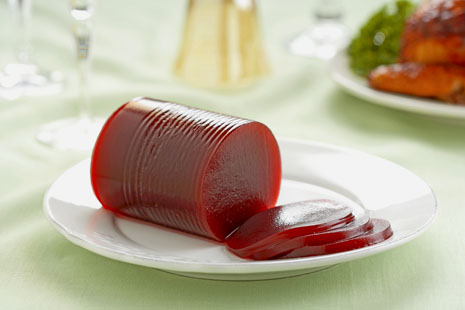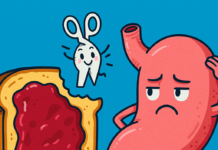Nothing ruins a good time like a friendly visit from the Urinary Tract Infection (UTI) Fairy. Anyone who has ever experienced a UTI, knows of the teeth-grinding-white knuckle, want-to-punch-everyone-in-the-face pain that comes along with one.

Did you know that UTIs are the most common health-care associated reported infection and mainly affects females? More than 50% of women will experience one in their lifetime (20% will experience more than one) and 10% of men will experience one.
Men experience UTIs less than women because they have a longer urethra that is further from to their…um…food exit area. Yup ladies! The anatomy joke is on us again!
Table of Contents
What are UTIs?
For those of you who don’t know, a UTI is an infection that attacks a part of your urinary system, which could include your bladder, ureters, urethra, and/or kidneys.

Approximately 90% of all UTIs are caused by E.coli, a type of bacteria, sneaking its evil little way up your short urethra and into your urinary system. The shorter distance it has to travel, the more likely it is to infect. Hence, why the whole, “women have a short urethra” thing really sucks.
Symptoms
- A frequent desire to urinate, even after immediately having done so
- A feeling of straining toward the end of urination
- A feeling of incomplete emptying of the bladder
- Pain and burning when urinating (It can feel like you’re peeing out razorblades)
- A need to urinate several times during the night
- Urine that is cloudy or bloody (pink or red)
- Strong-smelling urine
- Pain in the abdomen or back
- Fever
- Poor urinary stream (usually in men)
Why you get UTIs
If you get a UTI it doesn’t mean you’re a dirty slob who has too much horizontal fun-time, which seems to be the common thought. This infection is EXTREMELY common and can occur even if the wind blows a certain way. Much is still understood as to why they occur or how to prevent them.
However, some believed causes are:

- Drinking tons of alcohol and/or caffeine (irritants to the bladder)
- Suppressed immune system
- Pregnancy
- Not wiping front to back and/or poor hygiene
- Thong underwear
- Sexual activity or a new sexual partner
- Diabetes
- Menopause
- Age
- Bacterial changes in vagina
- Being a woman
Treatments for UTIs
Testing

If you go to the doctor complaining of UTI symptoms, here’s what’s going to happen:
- You’ll be asked to tinkle in a cup so they can test your urine.
- If you test positive for a UTI, they’ll immediately prescribe some form of antibiotics.
- Most likely they won’t find out what type of bacteria is present (unless you pay extra and request it), assuming that the UTI is caused by E.coli and assuming that antibiotics will cure you.
But here’s the rub on that pile of nonsense. Do you know what they use to test your urine??? A version of these test strips you can buy at any Walgreen’s, CVS, or drugstore: AZO UTI Test Strips.
These handy little guys measure the levels of nitrates and leukocytes (white blood cells) in your urine, which are totally present when you have a UTI. So you can either pay a doctor $150-$200 dollars to use these, or you can use them yourself.
Empowerment is cheap y’all.

Antibiotics
Antibiotics are currently the only prescribed method of treating UTIs. However, because of how antibiotics work in your body (blindly murdering all microbes, guilty or innocent) it can negatively impact your personal microbiome: the very thing you need in tip top shape to fight UTIs.
Taking antibiotics will immediately knock the UTI right outta ya. BUT, they might increase your risk of getting another UTI! Which means more antibiotics, which means more UTIs, which leads to you punching everyone in the face. If you’re really lucky, you’ll also develop digestive problems and an awesome yeast infection to boot! Now you’ll really be a hit at parties!

Preventative treatment
What about cranberry stuffs?
I’m sure many of you have heard people say, “Drink tons of cranberry juice!!! Take cranberry pillzzzz!” There’s a bit of truth behind their recommendation, but there are a couple problems with it as well.
The main problem is that most cranberry juice you purchase at the store is like 60% water, 38% sugar, and 1-2% actual cranberry. Therefore, you’re mostly drinking sugar water. Drinking large amounts of refined sugars might impair your immune system and change the microbe population in your gut. Both of which you desperately need in tip top shape to fight against infection.

And if you’ve ever chugged pure cranberry juice with zero added sugar, I salute you. I did once…ONCE.
The second problem with cranberry juice is that you’re getting very little of the key ingredient in cranberries that actually cures UTIs. If only there was a way to get a super-concentrated form of that magical ingredient minus all the cranberry juice chugging!!!
D-Mannose
Oh wait, there is! That magical ingredient in cranberries (also in other fruits such as peaches, oranges, blueberries, etc.) is a sugar called D-Mannose.

How D-Mannose prevents UTIs
To sum up the highly scientific process of how this guy works, I shall use one of my famously horrible analogies. *clears throat*.
D-Mannose is a possessive stalker who is madly in love with E.coli. When D-Mannose spies its love trying to hang out with your bladder cells it thinks, “NO. THEMS MINE.” D-Mannose quickly swims over to E.coli and grabs on as hard as it can. No matter what E.coli does to try to break free, it just can’t!
E.coli is stuck with ol’ possessive, stalkery, D-Mannose and has to go wherever D-Mannose goes. When D-Mannose is flushed out in your urine, poor E.coli is forced to go with it. Muhahah!

So that’s basically how it works in your body. Summed up: D-Mannose grabs onto E.coli and then both are flushed out of your bladder when you urinate.
You just went on a rant about sugar and now you’re telling me to take sugar pills?
Now calm down folks! D-Mannose is like the fiber of the sugar world! Less than 10% of it is actually absorbed. That would be like swallowing 10 teaspoons of table sugar and only absorbing 1 teaspoon (you wish).
D-Mannose vs antibiotics
Side effects
D-Mannose
- Bloating
- Loose stools
Antibiotics
- Rash
- Vomiting/nausea
- Diarrhea
- Yeast Infections
- Hives
- Renal Toxicity
- Liver Toxicity
- Dizziness
- Headache
- Photo-sensitivity
- Lethargy
- Allergic Reaction
- White patches on tongue
- And let’s not forget more likely to cause reoccurring infections and
- The risk of developing antibiotic resistant bacteria
Effectiveness
D-Mannose is one of the few supplements with actual scientific evidence backing its effectiveness. Instead of some toothless hippy claiming that eating tree bark (how is he chewing tree bark without any teeth??) will cure cancer, you actually have scientists proving that D-Mannose really works.
Numerous studies have proven that D-Mannose has about the same cure rate as antibiotics with a fraction of the side effects.
If you’d like to read more, check out my resources linked at the end of this article.
Dosage
Firstly, the type of D-Mannose I recommend is located here.
Because the studies are fairly new on D-Mannose, there isn’t an “agreed-upon-perfect-dosage” or frequency. However, the loosely recommended dosage (and the amount used in studies) is around 500-1000 mg of D-Mannose taken orally (either in powder form or pills) every 2-3 hours until improvement occurs. After you start seeing improvement, begin lowering the dosage gradually but continue taking for 2-3 days after all symptoms are gone.
Drink plenty of water when you have a UTI to flush bacteria out of your bladder. However, it is recommended to wait an hour or two after taking a dose of D-Mannose before you drink a lot of water. You want to give the D-Mannose time to interact with the E.coli.
As with most supplements, I would not recommend taking on a daily basis if you are no longer seeing symptoms. But, you can totally take it as a preventative measure once and awhile if you’re going to engage in an activity that usually triggers a UTI for you.

Warnings!
Always seek medical help if you can FIRST.
UTIs can quickly worsen and/or develop into kidney infections. Untreated, you could potentially cause permanent damage to your urinary tract or even put your life at risk. Always speak to your doctor first if you’re able to.
- D-Mannose usually works best at the first sign of an infection. If you’ve had one for awhile and it’s severe, this might not work for you.
- Do NOT continue taking D-Mannose if you are not seeing any improvement or are getting worse. If that is the case, you must see a doctor. I like to think of D-Mannose as a first step attempt to avoid using antibiotics. However, if it isn’t working, it’s time to pull out the big guns, a.k.a. see a doctor and get treatment.
- If your UTI is caused by something other than E.coli, D-Mannose will NOT work. However, considering that about 90% of UTIs are caused by E.coli, you’re working with some good odds.
The End. FINALLY.
WHEW, that was a long article. SEE WHAT I DO FOR YOU PEOPLE??? If you have any questions at all about this topic, please head to my Contact Page and ask away!
Here’s to a happy urinary system! 😀
References
https://www.niddk.nih.gov/health-information/urologic-diseases/bladder-infection-uti-in-adults
http://www.mayoclinic.org/diseases-conditions/urinary-tract-infection/basics/definition/con-20037892
http://www.ncbi.nlm.nih.gov/pubmed/23633128
https://www.ncbi.nlm.nih.gov/pmc/articles/PMC7024335/
https://www.sciencedaily.com/releases/2015/08/150806151354.htm
https://academic.oup.com/advances/article/11/3/616/5614218














